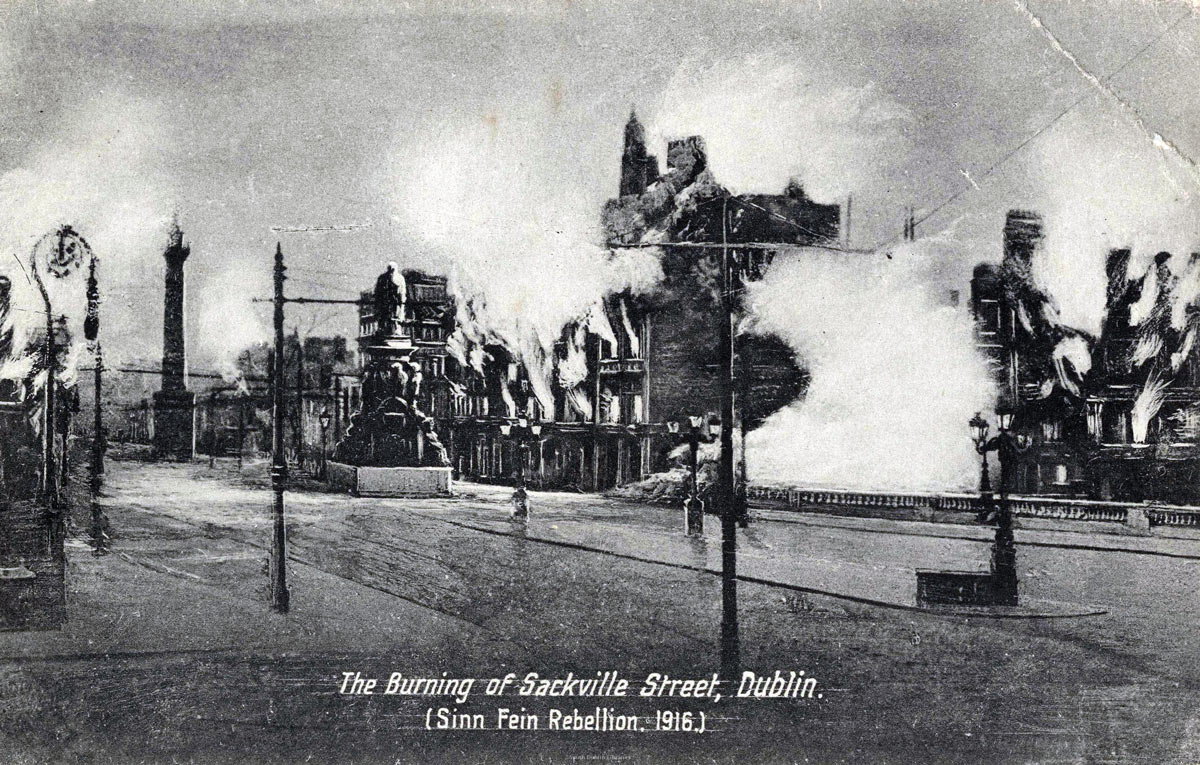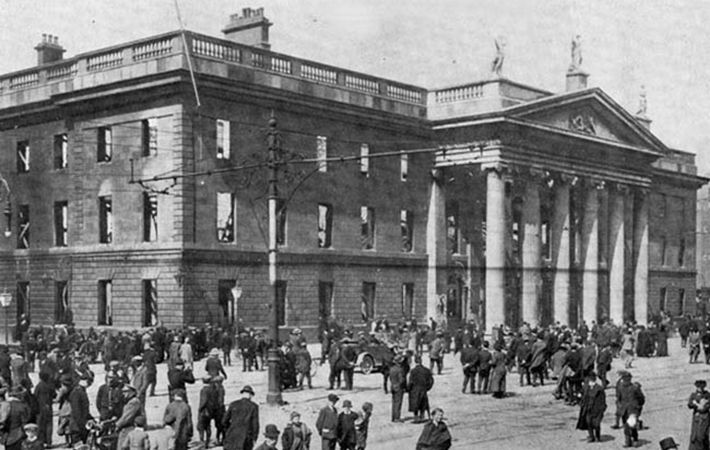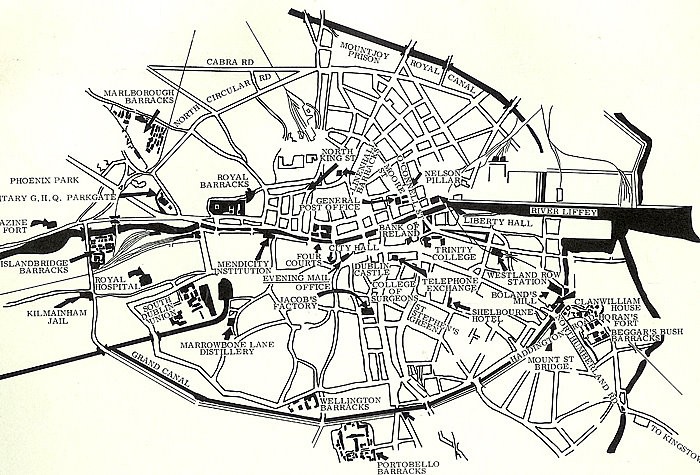
Sackville Street on Fire
Home
Historical Context
Conflict: The Rising
Easter Week 1916
Impact
Broken BarrierResearchEoin MacNeill (IVF) was about to call off the Rising when he was told that Roger Casement (IRB) secured weapons from the Germans. When MacNeill learned the German ship carrying the weapons was captured, he sent an urgent order stopping all IVF parades, which were a part of the Rising. However, the main leaders decided to go ahead with the Rising, but it was difficult to send word to all quickly. Thus, the conflict would be mainly centered in Dublin.
"They [The British] think that they have pacified Ireland.
They think that they have purchased half of us and intimidated the other half. They think that they have foreseen everything, think that they have provided against everything, but the fools, the fools, the fools! They have left us with our Fenian dead, and while Ireland holds these graves,
The ICA and IVF gathered at Liberty Hall in Dublin and marched down Sackville Street. Their target was the General Post Office (GPO), which was the central station of wireless communication and would serve as their headquarters. After capturing the GPO, Patrick Pearse read the Proclamation of Independence in front of the GPO. Other battalions captured strategic spots throughout Dublin. Their goal was to hold the city center as long as possible.

General Post Office, 1916
Failure to capture major ports and train stations led to the eventual arrival of British troops. Chaos descended and Dubliners looted shops. Marshall Law was declared and General Lowe took charge of the 1,000 British troops that were housed in Trinity College. They relied heavily on artillery bombardment against the rebels rather than assault. British reinforcements landed at Kingstown Harbor and began marching towards Dublin.

Map of Easter Rising Landmarks in Dublin, 1916
Eamon De Valera and his soldiers had captured Boland's Mill and took up positions aimed at Mount Street Bridge. The British marched endlessly into the line of fire until the volunteers ran out of ammunition and retreated.
General John Maxwell arrived from London with 16,000 British troops. British shelling caused Sackville Street to be a blazing inferno. To avoid the blaze, Pearse called a retreat, but became trapped in the buildings of Moore Street.

Sackville Street on Fire
Much of Dublin's city center was destroyed. As the death toll rose, Pearse and Connolly surrendered. Nurse Elizibeth O'Farrell was sent out with a white flag, and Pearse surrendered to General Lowe.
The Easter Rising was over. There were 254 civilians, 132 British soldiers and 64 Irish troops killed during the Rising.

Sackville Street in Ruin
General Maxwell wanted to make an example of the rebels and sentenced them to death. The executions took place at Kilmainham Gaol (Jail) on May 3. Sixteen rebel leaders were executed, including Patrick Pearse, Thomas Clarke, Sean MacDiarmada and James Connolly. British Prime Minister H.H. Asquith stopped further executions because he feared that the Rising leaders would become martyrs.
To Top